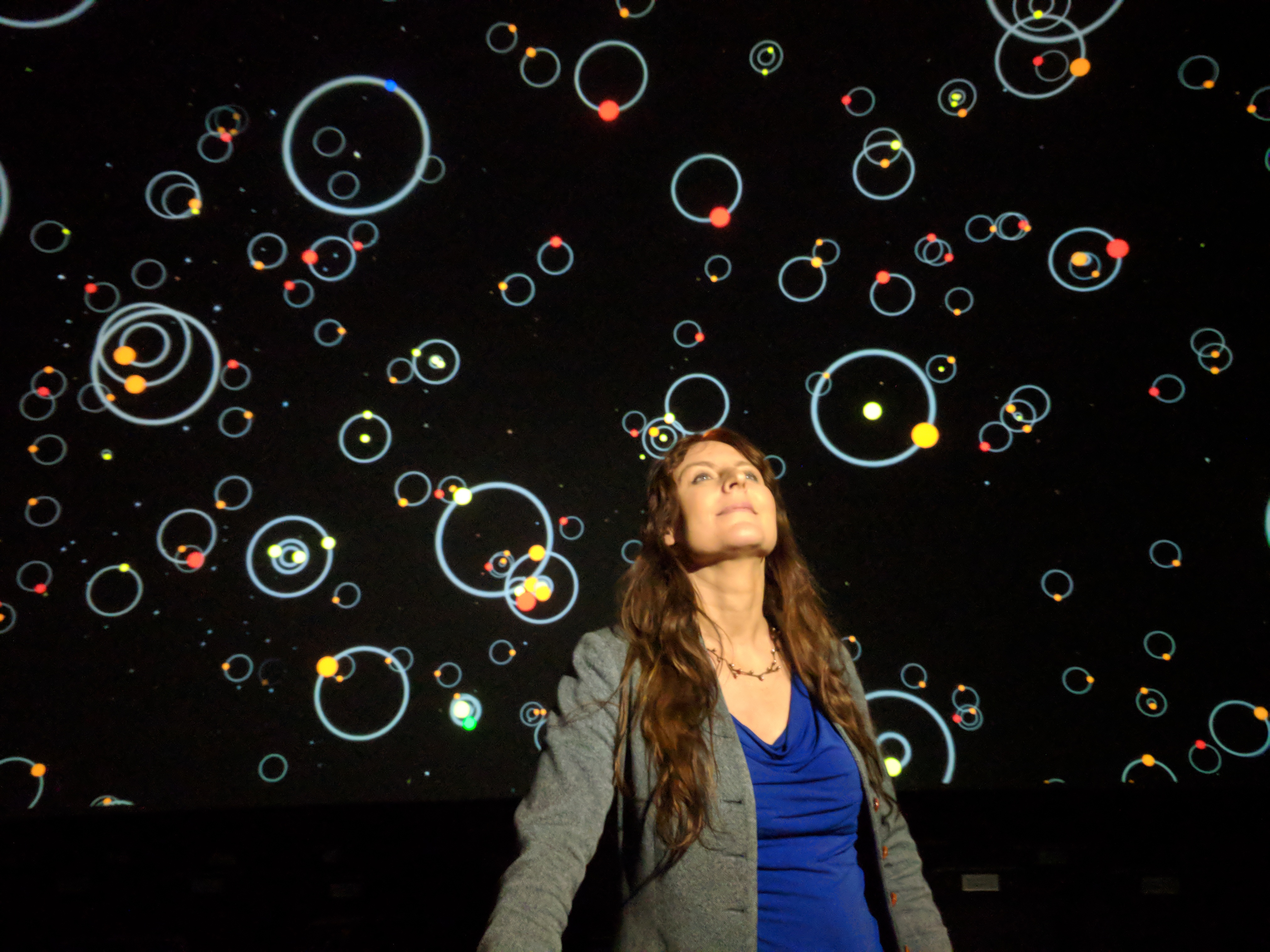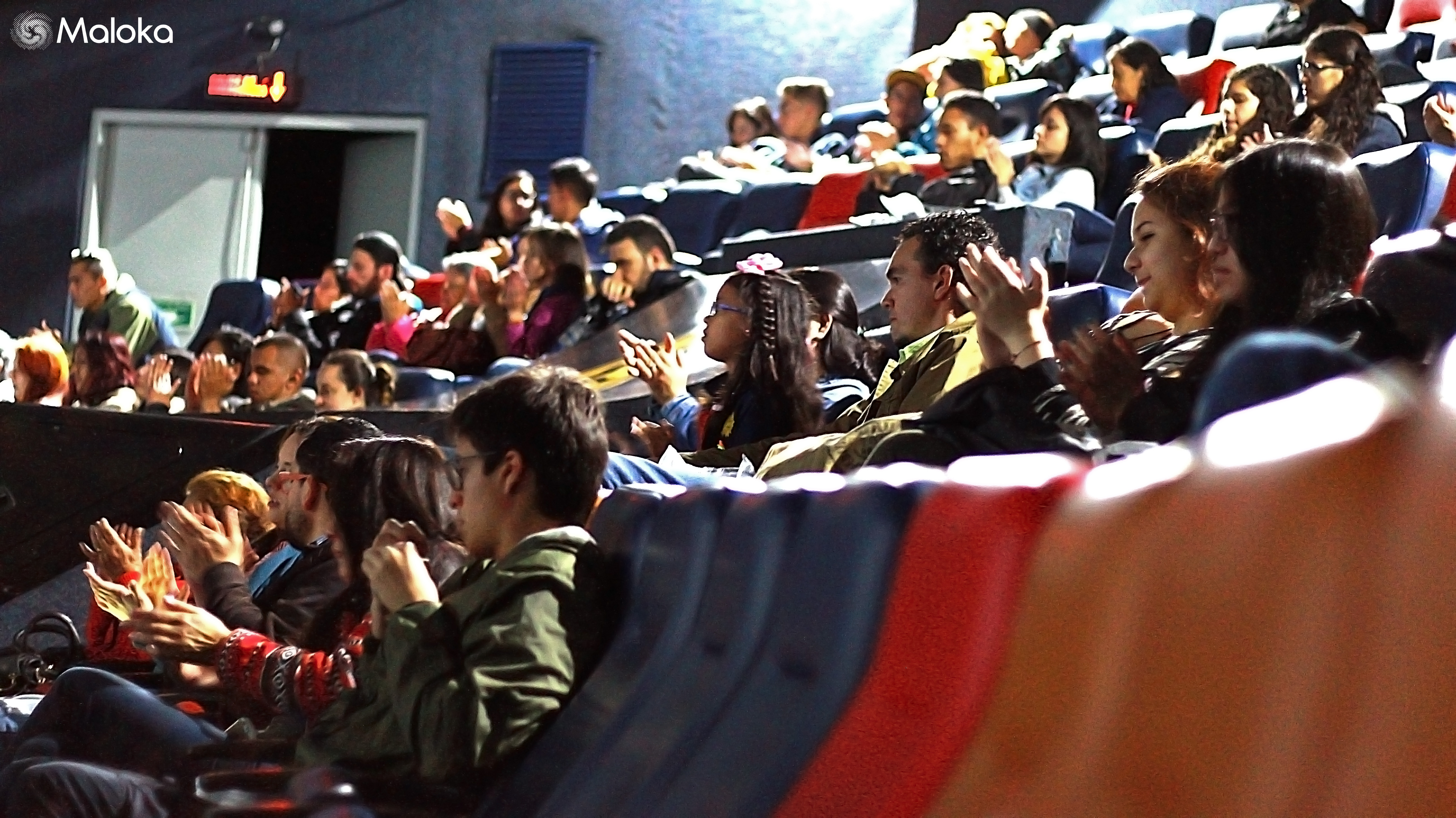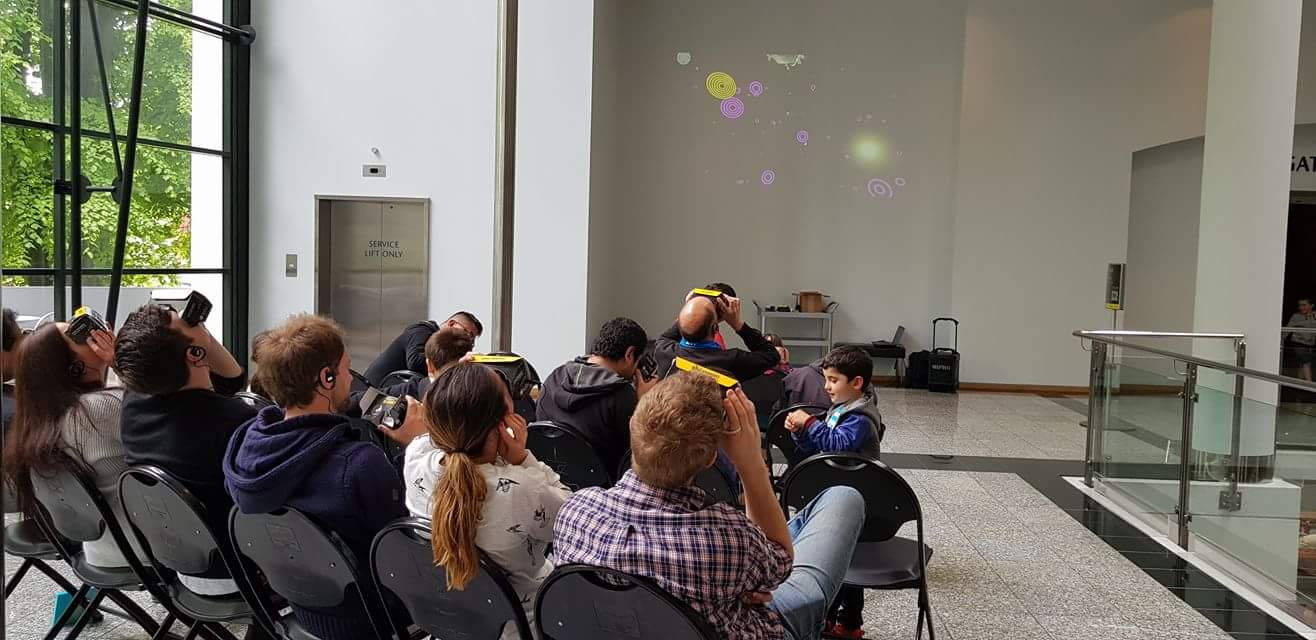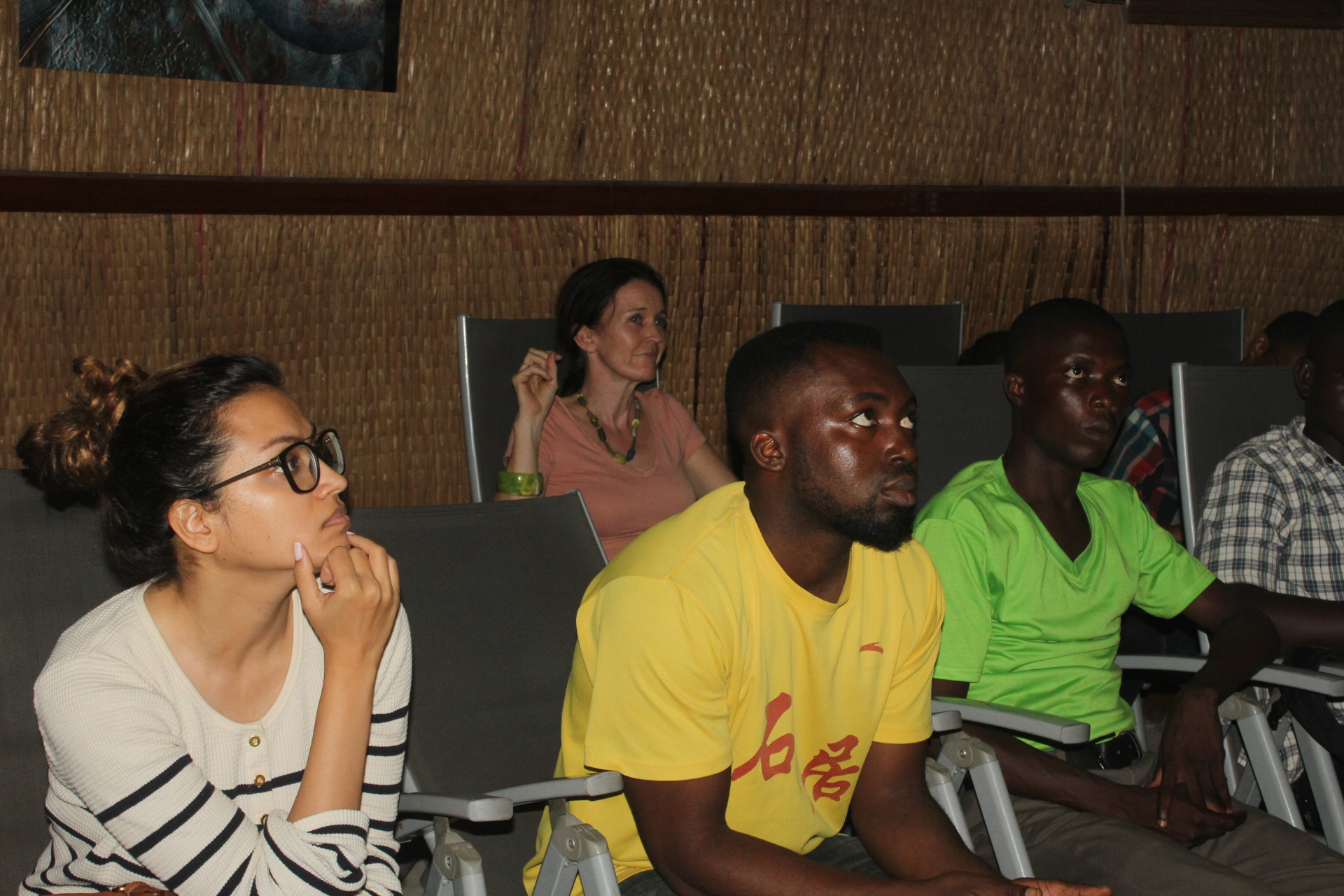In the fourth Kavli domecast lecture Lisa Kaltenegger, the Director of the Carl Sagan Institute at Cornell University addressed the question, “Are we alone in the Universe?”. This lecture was the largest yet, and included groups watching on Google Cardboard headsets in addition to those at one of the planetarium domecast partners. The vision behind these lectures is to combine world-class scientists with cutting-edge immersive visualizations.

Lisa Kaltenegger at the Adler Planetarium, during the latest Kavli Lecture "Are we alone in the Universe?"
The combination of speaker, visuals and venue (planetarium) produces the ultimate public science presentation. Working closely with James Cohen, the Director of Communications and Public Outreach at the Kavli Foundation, we select speakers who are excellent communicators as well as leading researchers. But there is another key component in the speaker selection, the lecturer must be excited about the prospect about seeing their science visualized in the planetarium, and willing to spend a significant time working with us to create the content for the domecast. That process involves regular Skype sessions, with screen sharing as content is created. We like to think about it more as a planetarium show than a traditional public science lecture. For example, in production we like to break down the content into “scenes” rather than “slides”. When possible we like to have the speaker visit the Adler well before their lecture so that they can experience there content on the dome. In almost all cases, this leads to new ideas for custom visualizations. We also ship a 360 camera to the lecturer so that they can capture immersive photography of their laboratory or field work. As much as possible we want the lecture to focus on the process of science, not just the scientific results. We want to create content that reflects the presenter’s personality and sense of humor. Those of you who have participated in past lectures will remember Michael Turner’s dark matter moose or Lisa Kaltenegger’s solar system cookie.
In my role as President-Elect of the International Planetarium Society I view domecast events like this as an important mechanism for creating collaboration among planetaria and connecting the global planetarium community. While there are frequently major scientists passing through a city like Chicago, that is not true of many parts of the world. Sharing resources strengthens our community. It is also exciting for our local audience to know that they are part of a global event. You could hear the reactions in Chicago as questions were read out from Ghana, Colombia, New Zealand and other locations. Of course, there are challenges in creating a global event. One of those is timezones, for example, an evening lecture in Chicago occurs in the middle of the night in Europe. Our solution is to do the lecture twice, once in the evening and once in the afternoon local time. With these two lectures, most of the world can find a workable time. Another challenge is language; we would love to start reaching beyond the English-speaking world. For the last lecture, the Maloka Planetarium in Bogota provided simultaneous Spanish translation. In the future, we will ask domecast partners who are providing translations to broadcast them so that other planetaria can sign on. In this way we can ‘crowd-source’ a network of translation streams.
Lecture participants at the Ghana Planetarium in Accra, Ghana.

Lecture participants at Maloka Centro Interactivo in Bogota, Colombia.

Lecture participants using Google Cardboard at the Otago Museum in Dunedin, New Zealand.
Creation of new content
In creating content for the domecasts we strive to emulate solid data and production practices. Uniview content modules are built using Uniview’s Jupyter notebook based ModulesBuilder package. These python libraries make it much easier to create and modify new content. Equally important it simplifies the process for other planetarians looking to extend upon your work and create something new. We also strive to connect the content module to the data source. This is a topic I’ve written about in a previous blogpost “The Data Savvy Planetarium”. For example with our OpenExoplanetCatalog visualization module we provide the python code to query the OpenExoPlanet Catalog and create a new data file. Code like this can be set up to run every night, making sure that your planetarium content is always up to date.
We also strive to create sophisticated data visualizations. As an example, consider again the OpenExoplanetCatalog module created for the Kaltenegger Lecturer. Instead of just markers showing you which stars contain exoplanets, the ‘bullseye’ visualization shows you how many planets are in each system. Color mode options allow you to see how an exoplanet was discovered, what size the planets are, or which planets are in the habitable zone. In addition, the dataset can be animated, showing the discovery of exoplanets over time. Inspired by Dan Fabricky’s ‘Kepler Orrery’, another option shows animated mini planetarium system. Less obvious than these visualization modes are the techniques we use to represent incomplete and censored data. Distances to the host star are unknown for a large fraction of the exoplanet discoveries. Frequently these objects are simply left out of 3D planetarium visualizations. In our module, these objects are drawn when the camera is close to Earth and as you fly away and you start to detect stellar parallax they fade away. Similarly, some of the discoveries are still controversial. These objects are represented as well, as gaps in the ‘bullseye’ visualization.
Growing the network, sharing more
Looking forward we hope to continue to expand the domecast network. We will continue to stream the lectures to YouTube 360, allowing those without access to a planetarium running Uniview to join. Uniview 3.0 offers a number of improvements which should improve the domecasts. In particular, I am excited about the integration of the domecast interface, the improvements in panels and the enhancements to the USES modules. We plan to hold two Kavli Fulldome Lectures per year in the spring and fall. The next lecture deals with a timely and important topic, climate change. Dr. Daniel P Schrag from Harvard University will present "The Once and Future Earth: Perspectives on a Global Challenge" on May 9th. I invite everyone in the Uniview community to join us.


